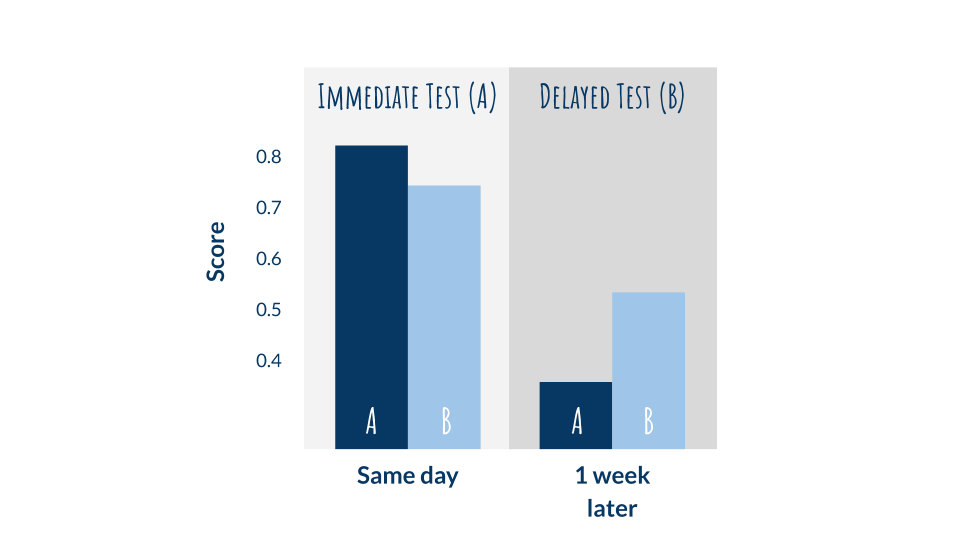19
“Teaching is facilitated or hampered by different strategies in learning” Hascher (2010). What students do, the strategies that they use, make a difference in how much learning takes place. However, students “often have a faulty mental model of how they learn and remember, making them prone to both misassessing and mismanaging their own learning” (Bjork, Dunlosky & Kornell, 2013). Students need help in improving their abilities to learn – and what teachers do, the strategies they use, makes a difference. “Learning is enhanced or impeded by different instructional strategies” Hascher (2010). Project Illuminated highlights a few selected evidence-based teaching practices in its materials and workshops. These strategies are inexpensive to use (time, resources, effort), align with the science of learning (e.g. our understanding of how learning happens), and contribute to developing student metacognitive skills (Pashler et al., 2007). Namely, these strategies both help students learn and can help correct ineffective study habits such as cramming, rereading, and inadequacy of practice. The primary strategies of focus in Illuminated are retrieval learning which involves having learners try to reconstruct what they’ve learned from their memories, distributed practice which involves spacing the reviews of learning over time, and spaced learning which involves repetition and active breaks during a learning session.
Why is it important that we choose evidence-based practices? Because teaching strategies make a difference!

The learning design decisions educators make impact student learning. Below are some examples taken from SOL empirical studies – studies that go beyond behavioural, observational, and learning assessment data and align their findings with our understanding of how the brain operates (i.e. consistent with our current understanding of the structural and functional properties of the brain). Note that the examples of retrieval learning, distributed practice and spaced learning are further elaborated on in the subsections that follow. Retrieval learning led to a 49% increase in test scores across students by changing the type of practice activities students performed (e.g. by having students practice “taking information out” rather than “putting information in”) (Karpicke & Blunt, 2011). Distributed practice led to a 35% increase in student test scores. There was no increase in time spent learning, distributed practice just changed the schedule of when material was presented (Bloom & Shuell, 1981). Spaced learning was shown to lead to a 14% increase in students’ final test scores – this was achieved by changing how the content within a single lesson was presented (Kelley & Whatson, 2013). Additional strategies have been integrated into the design of the Illuminated workshops including pause procedures which involve explaining what you’ve learned to a partner (Richards et al., 2017); self-explanations which involve explaining what you’ve learned to yourself (Bisra et al., 2018); drawing to remember which involves representing key concepts visually and drawing them out to enhance learning (Fernandes, Wammes & Meade, 2018); and peer instruction which involves having students in lecture settings efficiently debate critical concepts (Mazur, 1997; Schell & Butler, 2018). All of these strategies are cheap to use. They don’t require special technologies or applications, nor do they require additional classroom time (Pashler et al., 2007).
References
Evidence-based teaching practices
- Pashler, H., Bain, P. M., Bottge, B. A., Graesser, A., Koedinger, K., McDaniel, M., & Metcalfe, J. (2007). Organizing Instruction and Study to Improve Student Learning. IES Practice Guide. NCER 2007-2004. National Center for Education Research.
- Bjork, R. A., Dunlosky, J., & Kornell, N. (2013). Self-regulated learning: Beliefs, techniques, and illusions. Annual review of psychology, 64, 417-444.
- Hascher, T. (2010). Learning and Emotion: perspectives for theory and research. European Educational Research Journal, 9(1), 13-28.
- Bloom, K. C., & Shuell, T. J. (1981). Effects of massed and distributed practice on the learning and retention of second-language vocabulary. The Journal of Educational Research, 74(4), 245-248.
- Karpicke, J. D., & Blunt, J. R. (2011). Retrieval practice produces more learning than elaborative studying with concept mapping. Science, 331(6018), 772-775.
- Kelley, P., & Whatson, T. (2013). Making long-term memories in minutes: a spaced learning pattern from memory research in education. Frontiers in human neuroscience, 7, 589.
- Mazur, E. (1997, March). Peer instruction: getting students to think in class. In AIP Conference Proceedings (Vol. 399, No. 1, pp. 981-988). AIP.
- Schell, J., & Butler, A. C. (2018). Insights from the Science of Learning: Understanding Why Peer Instruction Is Effective Can Inform Implementation. In Frontiers in Education (Vol. 3, p. 33). Frontiers.
- Bisra, K., Liu, Q., Nesbit, J. C., Salimi, F., & Winne, P. H. (2018). Inducing self-explanation: A meta-analysis.
- Richards, L. W., Wang, A. T., Mahapatra, S., Jenkins, S. M., Collins, N. M., Beckman, T. J., & Wittich, C. M. (2017). Use of the pause procedure in continuing medical education: A randomized controlled intervention study. Medical teacher, 39(1), 74-78.
- Fernandes, M. A., Wammes, J. D., & Meade, M. E. (2018). The surprisingly powerful influence of drawing on memory. Current Directions in Psychological Science, 27(5), 302-308.
Media Attributions
- EN Illuminated eBook Graphics
